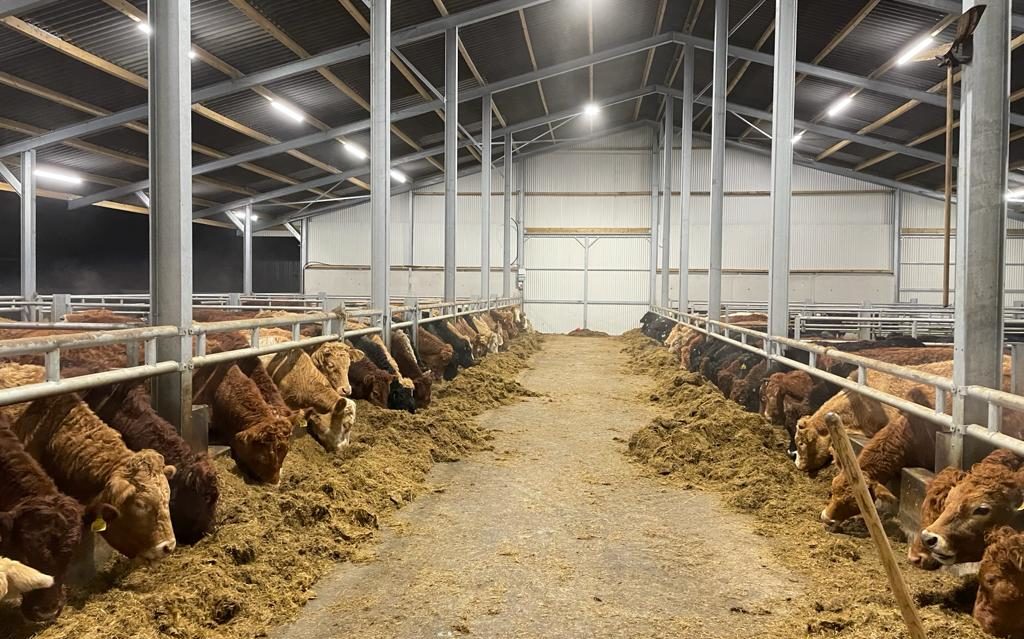The popularity of young bull finishing has been in gradual decline among Irish beef farmers over the past decade.
Many larger-scale beef farmers who had been finishing bulls for years have transitioned to finishing bullocks and heifers over the past number of years and the primary reason for this trend is market demand.
According to figures from Bord Bia, in 2021, there were just under 130,000 young bulls processed in Ireland, compared with 675,000 steers.
When we compare these figures to 2012, we see the annual slaughterings included approximately 207,000 young bulls and just 466,000 steers.
While the reduction in young bull finishing has been primarily as a result of beef market demands, the general increase in concentrate feed costs over this period has also been a factor.
Different beef processors in Ireland have specific preferences in relation to the animals that they purchase and this is dictated by the markets and customers these beef processors supply.
For example, beef processors with major retail customers in Ireland and the UK tend to focus on filling their kill sheets primarily with in-spec steers and heifers.
Farmers planning on finishing young bulls have long been advised to consult with their intended meat plant in advance of having finished bulls to sell. According to Bord Bia, this is because there are fewer market outlets available for the resulting product, than for steer or heifer beef.
EU Markets
EU markets accounted for some 49%, or €1.02 billion, of Irish beef exports in 2021, according to Bord Bia figures
In Germany, the Netherlands, Belgium and Italy, Irish beef is now, by and large, sold at a premium to local product.
Customers in these markets readily recognise the distinctly different visual appearance and eating quality attributes of prime Irish steer and heifer beef in comparison with the local offer.
Throughout the past decade, Bord Bia has noted that feedback from the market has consistently been that young bull beef is viewed as a commodity product, similar to what is abundantly available across the continent.
By contrast, prime Irish steer and heifer beef represents a significant point of difference, which is more easily complemented in promotion by Irish provenance, grass-based imagery and the further positive credentials offered under Quality Assurance and Origin Green.
UK markets
The UK market is also of fundamental importance, representing 42%, or €880 million of Irish beef exports last year.
Irish beef enjoys an 80% share of total beef imports to the UK. It is stocked by the top three British retailers (Tesco, Asda, Sainsbury’s) and remains the only imported beef in the mainstream UK retail channel.
There is a limited acceptance of beef from certain young bulls (under-16 months) amongst these customers, as a substitute for steer or heifer product, which is their preferred supply.
Awards
Furthermore, Irish beef has achieved numerous culinary accolades and endorsements achieved internationally, which include the World Steak Challenge, BEEF magazine in Germany, Bocuse d’Or in France and over 90 Michelin-starred chefs within Bord Bia’s Chefs Irish Beef Club.
According to Bord Bia, these awards would not have been possible with product from young bulls.
Bull beef prices
Over recent months, young bull prices have experienced a positive uplift across Europe.
This has been partly driven by a lift in demand for manufacturing beef, and an advantage of young bulls is that they generate a high yield of lean forequarter meat.
Prices for the week ending February 6, show the EU-average R3 carcase price for this category was equivalent to €4.57/kg, compared with €4.35/kg (excluding VAT) for R3 steers.
However, the Irish steer price has outperformed its European counterpart during eight of the past ten years.
In 2021, Irish R3 steers averaged €4.07/kg (excluding VAT) for the year, against €3.91/kg for EU young bulls of the same grade.
